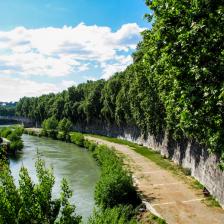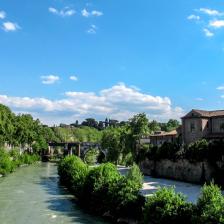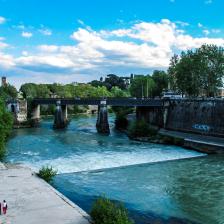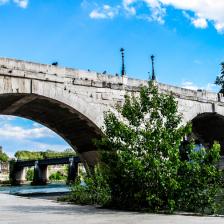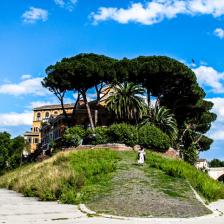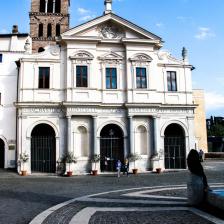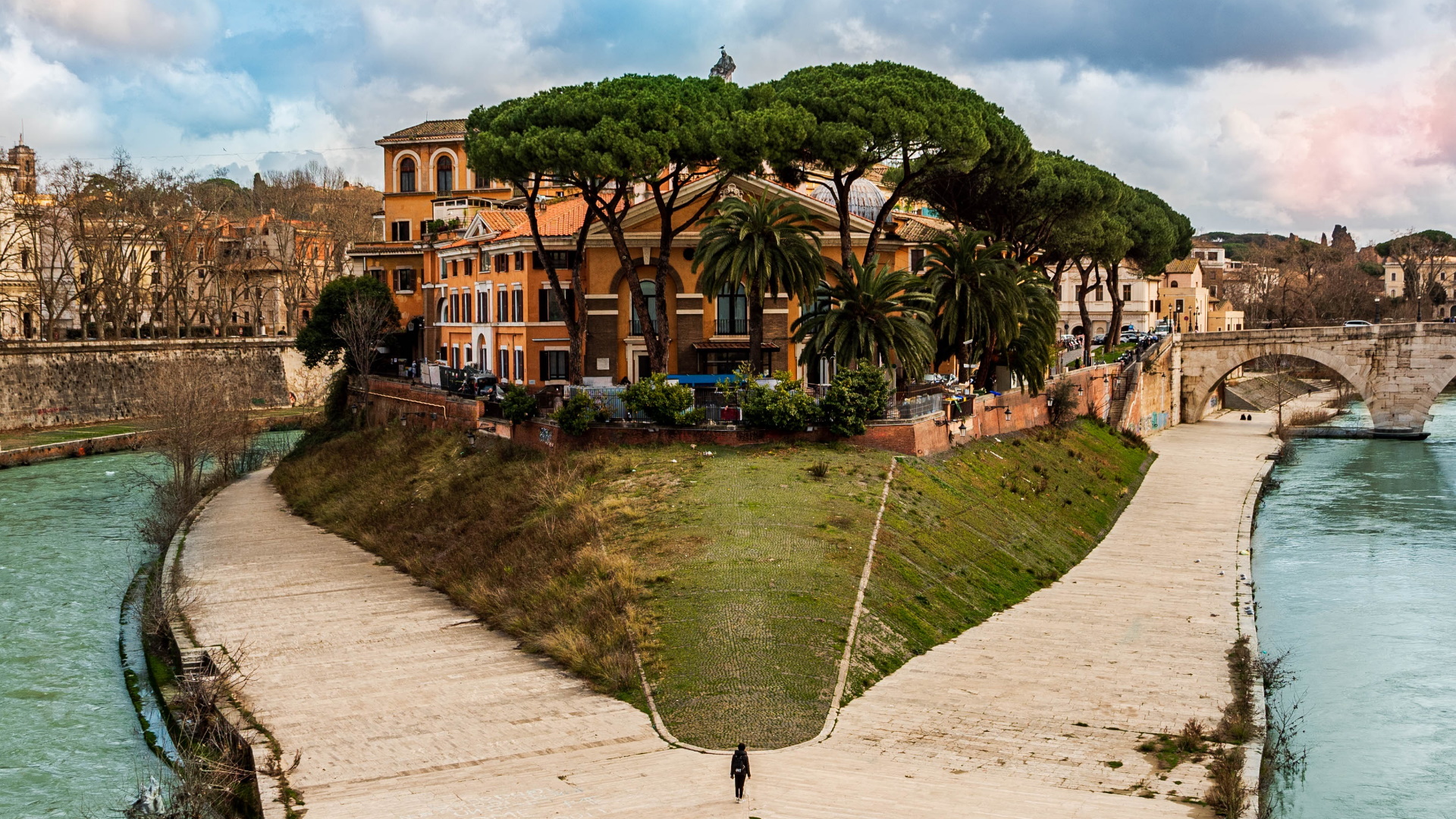
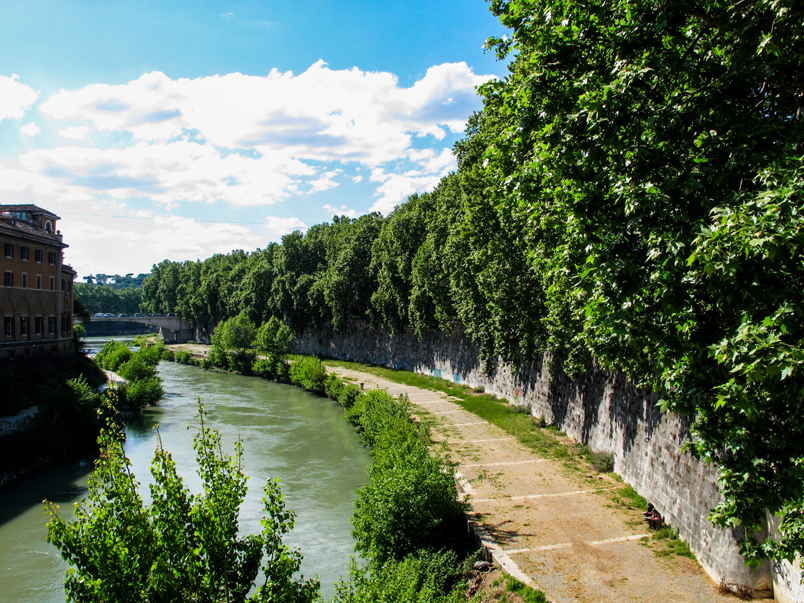
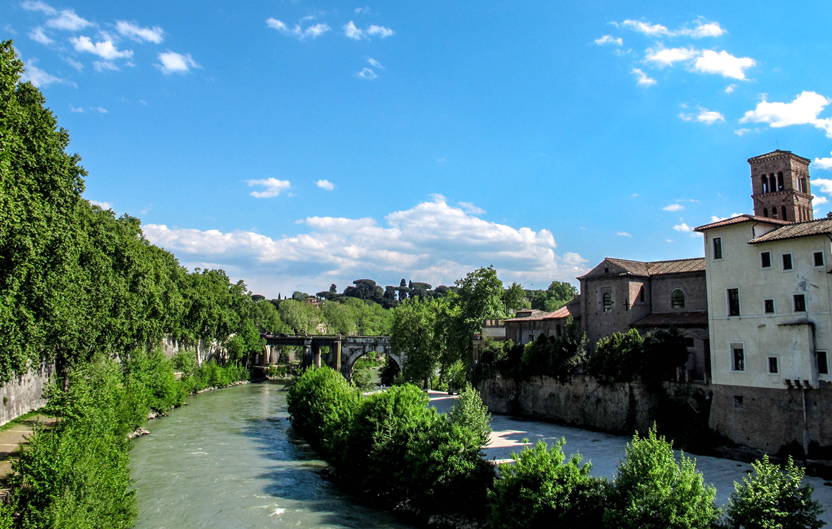
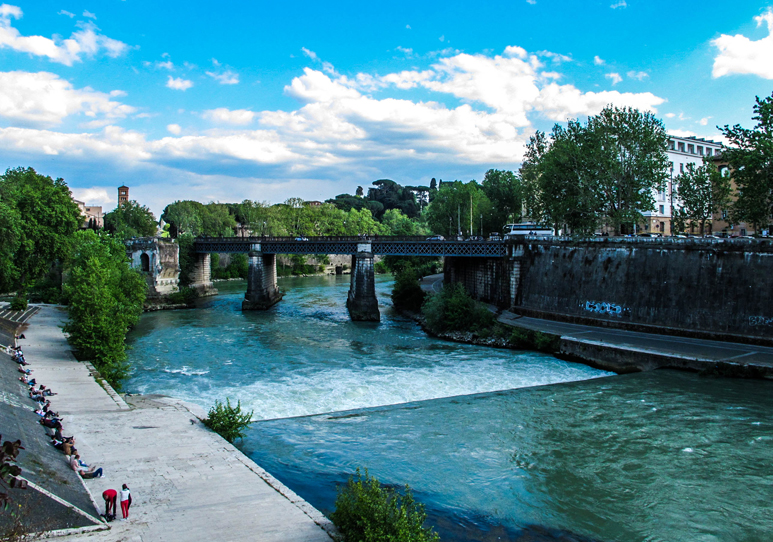
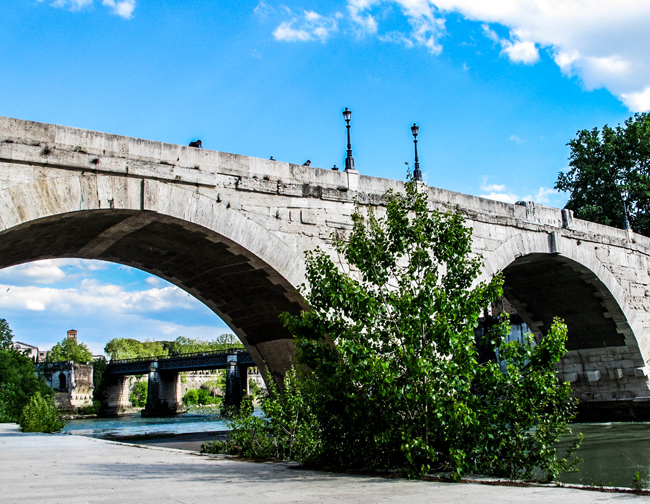
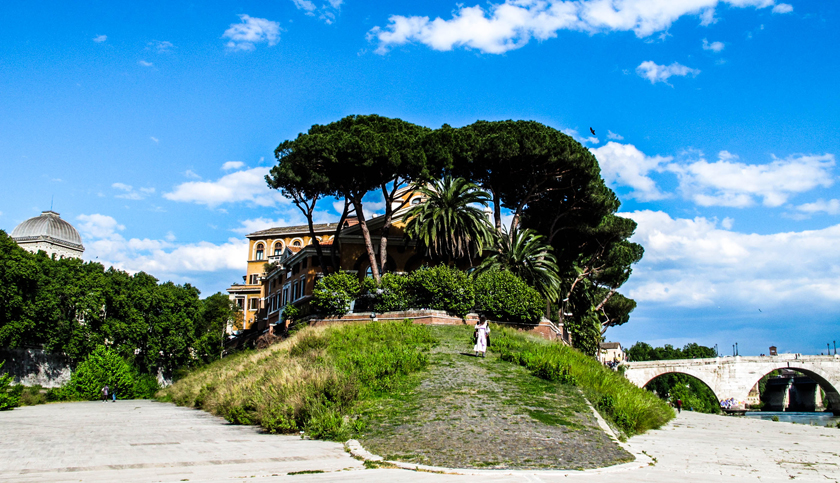
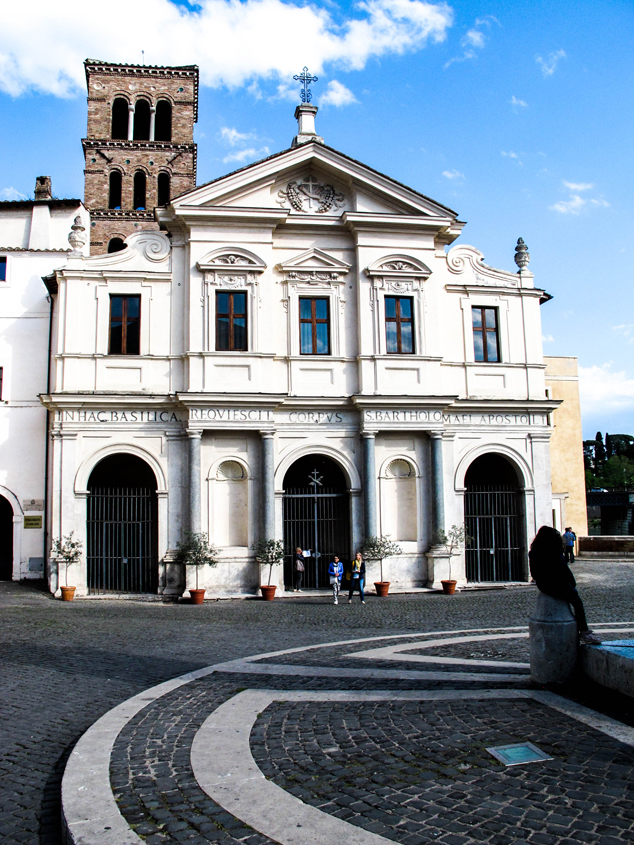
Legend has it that the Tiber Island was formed, to say the least, in a rather curious manner: the angry Romans, after having overthrown in a popular uprising the reviled tyrant Lucius Tarquinius Superbus, threw his wheat and grain into the Tiber. The accumulation of mud around it is said to have gradually lead to the forming of the island. In truth tuff rock, rather like that near the Capitoline Hill, compacted forming the natural geological foundation for the sand, dragged here by the river’s current, to rest.
The island has also been traditionally associated through the centuries with the healing of the sick. In fact, it is often also called the Stone Ship, an indirect reference to this very association. In 291 B.C., a terrible plague swept through the city of Rome, wiping out much of its population. The priests, after having consulted the Sybilline books, despatched a delegation on a ship to Epidaurus, a small city in ancient Greece and site of a sanctuary to Aesculapius, to bring back a statue of this God of Medicine and Healing. The ambassadors returned bringing with them a serpent, an animal closely associated and dear to the God.
On approaching the Tiber Island, according to the Roman Poet Ovid in his Metamorphoses, the serpent jumped ship and swam to the islet. Believing this was an incarnation of the God himself, a temple to Aesculapius was erected just where the serpent landed and the island was carved into the shape of a ship as a tribute to the occasion. Today the Aesculapius temple lies under the Church of San Bartolomeo, a new basilica constructed by the Emperor Otto III in 998. In 1582, the Spanish monks of the Order of St. John Calibytis founded a hospital which is still fully operational today and whose name "Fatebenefratelli" derives from the litany which these prelates used to sing as darkness fell on leaving to collect alms.
The river Tiber
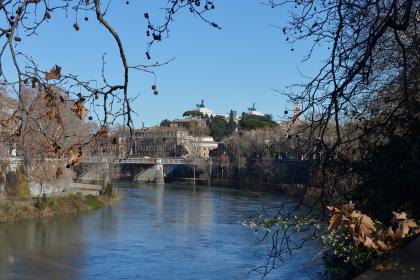
According to legend, the history of Rome begins right here
Ponte Cestio
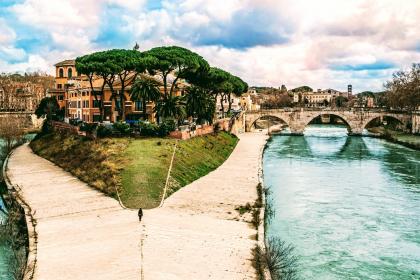
 Condividi
Condividi
Sant'Angelo Castle
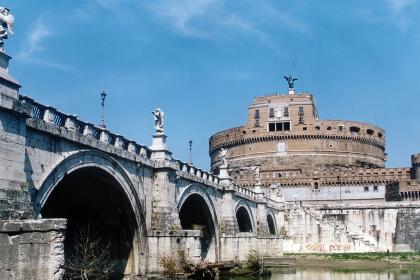
 Condividi
Condividi
Information
 Condividi
Condividi
Location
To find out about all accessibility services, visit the Rome accessible section.












































